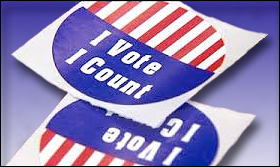By Jim Ellis
 July 13, 2018 — Much has been written over the past few elections cycles about voting enthusiasm and whether it is a predictive political factor. It has been seemingly apparent that the party members most interested in participating in an election, most particularly for a midterm or special election vote, generally see its candidates enjoy the greater success.
July 13, 2018 — Much has been written over the past few elections cycles about voting enthusiasm and whether it is a predictive political factor. It has been seemingly apparent that the party members most interested in participating in an election, most particularly for a midterm or special election vote, generally see its candidates enjoy the greater success.
Yesterday, we looked at the extensive just-released Survey Monkey-Axios Media data that covered 13 US Senate races. The combined number of states also hosts a minimum of 15 competitive US House races. To re-cap, while the Survey Monkey analysts posted results under various turnout models in each of the tested states, it generally became clear about which candidate has the current advantage from the Senate contests in question.
Democrats were performing well in the Midwest and Mid-Atlantic regions, where incumbents in Pennsylvania, Michigan, Wisconsin, Ohio, and West Virginia all held substantial leads over their Republican opponents.
The GOP held the upper hand in Indiana and North Dakota challenge races. In the South, Republican Gov. Rick Scott looks to be topping Florida Sen. Bill Nelson, and US Rep. Marsha Blackburn (R-TN) has opened a substantial lead over Tennessee former Gov. Phil Bredesen.
Turning to the West, Democrats are moving ahead in both Arizona and Nevada and securely lead in Montana.
The Missouri contest between Sen. Claire McCaskill (D) and Attorney General Josh Hawley (R) stretches from a five-point Democratic lead all the way to a five-point Republican advantage depending upon the turnout model.
The Survey Monkey pollsters tested voter enthusiasm in all 13 states. They asked the following question:
“What are the chances that you will vote in the November election for US Senate and other offices?”
The positive responses were: “absolutely certain to vote” and “will probably vote.” On the negative side, the choices were: “chances are 50-50”; “chances are less than 50-50”; and “will not vote.” Because the people participating in this online poll are part of 3,000,000 individuals who have agreed to answer polling questions from time to time, which would suggest these individuals are likely more motivated people, those answering with a negative response were very few.
Looking at the total responses, the voters most inclined to participate in the coming midterm election were from Montana, where 96 percent of the respondents said they were either “certain to” or “would probably” vote. Breaking into partisan segments, 88 percent of both Democratic and Republican sample cells said they were certain to vote. This compares with 74 percent of self-described Independents who also professed that casting their future vote is a certainty.
The lowest participation state of the tested 13 is Indiana, but still recording a certain or probable voting response of 80 percent. There, 84 percent of Republicans are certain or probable voters, as are 83 percent of Democrats. The Independent combined number falls substantially back at 62 percent.
Among Independents, who score much lower on the participation scale across the board, the most motivated cell within this universe are from Montana and North Dakota. Seventy-four percent of Independents from both of these states say they are certain to vote. The least motivated appear to be in Pennsylvania, where only 38 percent of Keystone State Independents say they are certain to vote.
While enthusiasm can be a determinative factor in who will or will not vote in coming elections, in these 13 states it appears that voters in both parties are almost equally motivated. While Republicans average one percentage point higher in the combined certain and probable categories, Democrats have a similar advantage among those who are most certain to vote.
Therefore, at least in these critical Senate states where enthusiasm is high for both parties, it doesn’t appear, according to this Survey Monkey data, that either side has a current discernible turnout advantage.
